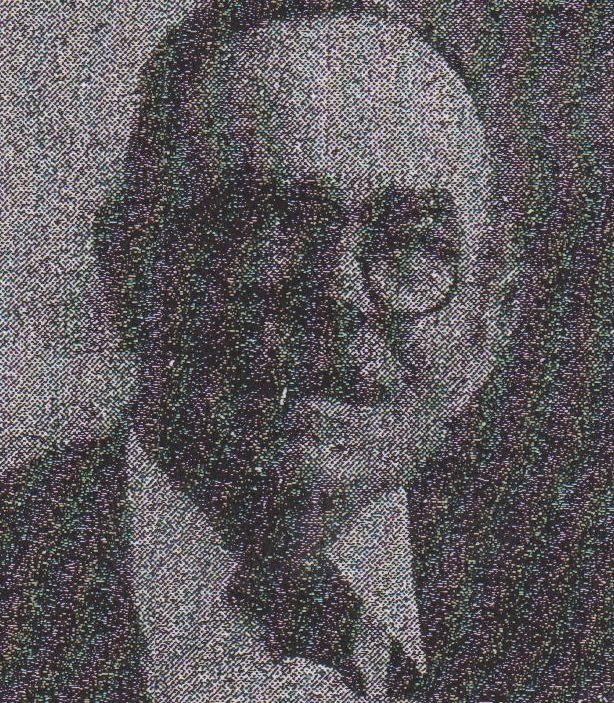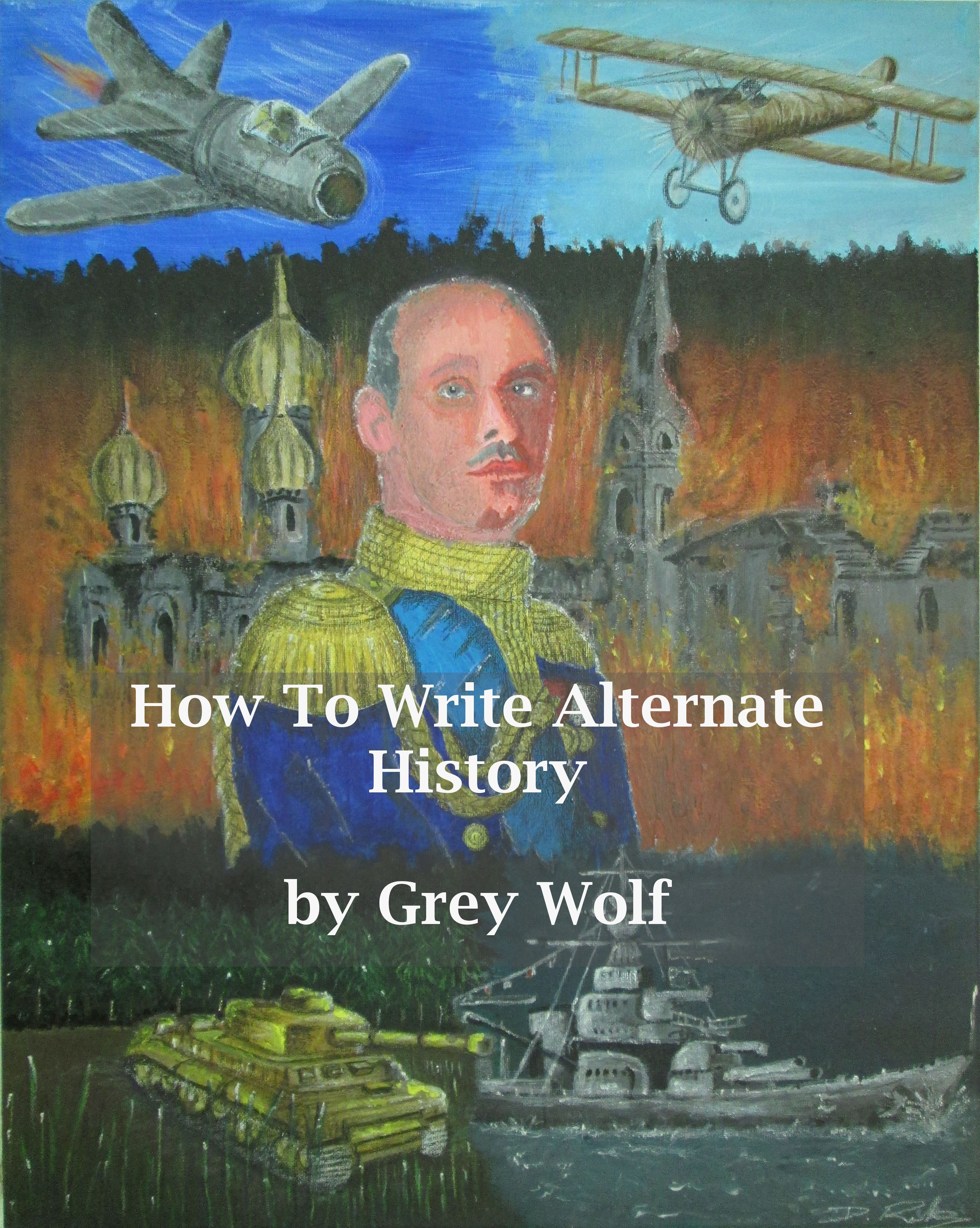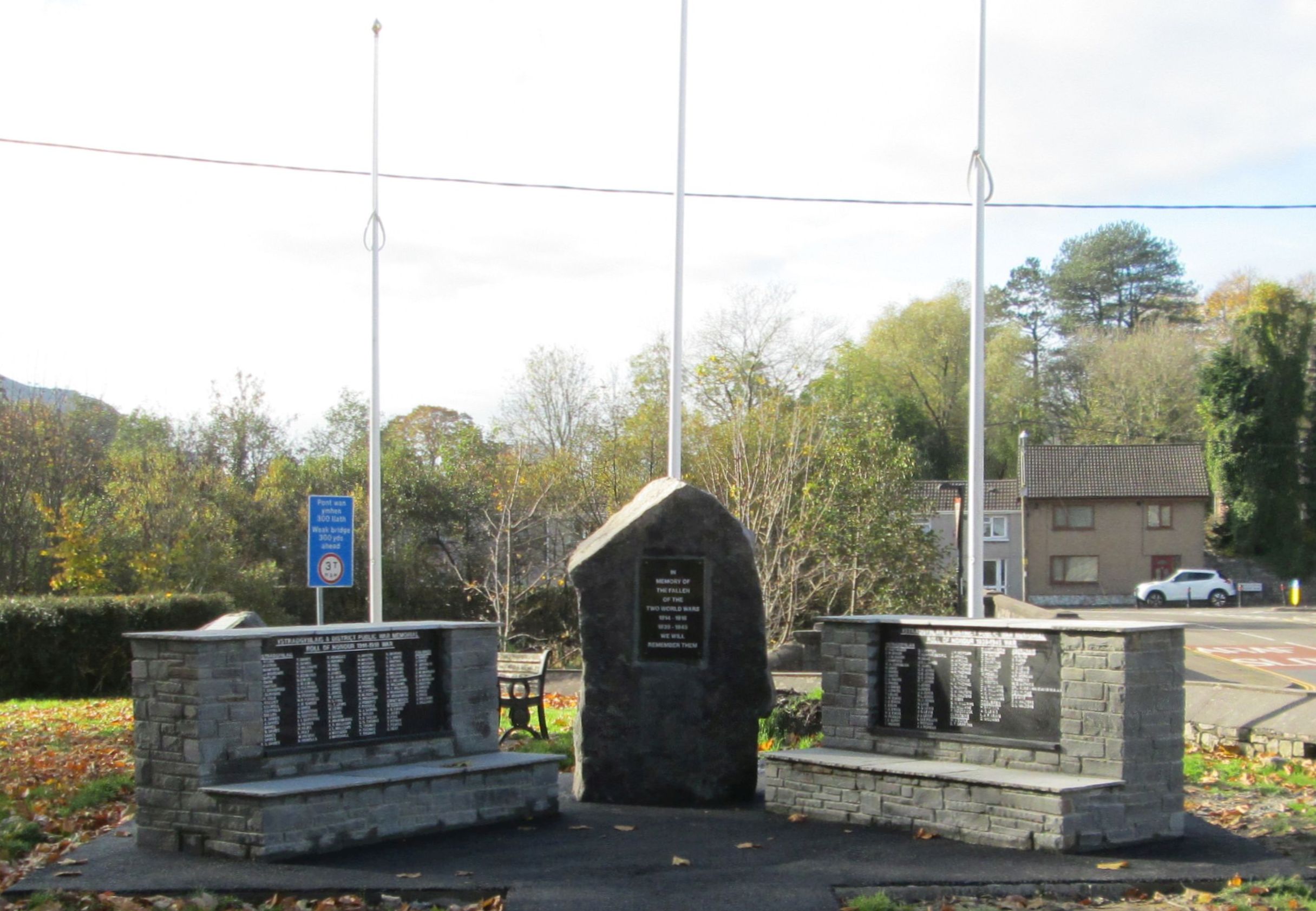Ystradgynlais & District
History and Heritage
John Miller of Ystradgynlais
This weeks' 'Interesting Lives' article on Mr John Miller started with his funeral which took place at St Cynog's Churchyard in 1933. As I am in the process of compiling a list of Ystalyfera inhabitants who have been buried in St. Cynog's, I would not normally have taken much notice of this gentleman, except for the caption which headed his obituary:
THE OLDEST SOLDIER IN YSTRADGYNLAIS
I decided to make a note so that when I was next at St Cynog's, I could take a photograph of the grave but not only could I not find the grave, I was even more disappointed when I could not find his name amongst the burial records. More research was needed and eventually I discovered a photograph of Mr John Miller and began putting his life together: in fact when I had completed his profile I realised I had a gentleman who had not only led an interesting and remarkable career both as a war veteran and ex- sailor, but a gentleman I believe warrants a place in YEARGroup's list of interesting lives.
A SOLDIERS FUNERAL - BURIAL OF MR JOHN MILLER YSTRADGYNLAIS
Semi military honours were accorded Mr John Miller, Tydfil House Ystradgynlais, who was laid to rest in the Parish Churchyard Ystradgynlais on Saturday 25th March 1933. There was a very large gathering. A large company of ex-Servicemen attended in charge of Mr David Phillips. The cortege was headed by the Ystradgynlais Public Band under the conductorship of Mr Tom C White and they played 'The Dead March' on route.
Included in the list of mourners were the names of his son in laws and daughters: Mr and Mrs Charles Neale, Mr and Mrs James Gray, Mr Trevor Price and his son and his wife: Mr and Mrs Thomas John Miller.
His wife who he had married in Ystradgynlais Church on 22nd January 1887 was Mrs Mary Miller nee Evans and she had died in 1920. After her death he made his home with his daughter and son in law, in Tydfil House Smithfield, Ystradgynlais. It was here on the Sunday evening of 19th March, that he had passed away very suddenly at the age of 72 years.
His birth may not have been as peaceful, for he was born at sea and his mother, who was also recorded as being born at sea, actually died bringing him into this world and her remains were buried in the waters of the Black Sea. His father appears to have been an army paymaster but whatever life was like on land, he ran away from home around the age of 11 and joined a schooner berthed at Plymouth. The schooner was bound for Hamburg but unfortunately never reached her destination as she was wrecked on the coast of Holland. The crew managed to get to Netherlands where they boarded an American Ship the Belle Morse, which was bound for Callao Peru. The voyage was quite pleasant with fairly good weather, until, that is they got to Cape Horn where due to heavy seas the captain ordered the ship to about turn. For 7 weeks they endured the pitching, tossing and rolling, first the bow and then the stern disappearing under water until at last they had weathered the Horn.
John Miller actually wrote of his experiences and gave an account to Mr C D Lake the newsagent at the time in Ystradgynlais.
This rounding the Cape Horn was mentioned by John as being:
"The experience was a terrible one, as the men's hands when aloft, to shorten sail, froze to the canvas. On that voyage the crew caught an albatross and a shark, the killing proving a thrilling one."
But that was not the end of their troubles. On arriving at Callao, the crew were stricken with yellow fever and had to be taken to hospital, John Miller himself spending nine weeks in the hospital.
One of his many voyages however, was the result of being shanghaied. After he had survived the Cape and yellow fever he met up with a 'runner' from the boarding house that he was staying in and taken to an American ship The Sapphire. Only given a pair of dungarees and an oil skin, he had not been given the usual advanced payment and thus began a very troubled voyage until he managed to depart the ship at San Francisco, albeit finding himself a now somewhat stranded sailor.
As he waited at a boarding house Lady Luck did turn however, for an English ship The Bedfordshire arrived at the port and he discovered that when she continued her voyage she would be sailing for Liverpool. John joined the crew and after crossing the Line, they needed fresh vegetables and water, so the ship made its way to Pitcairn Islands.
Looking up the Pitcairn Islands today there is an interesting page which asks a question 'Why will nobody move to Pitcairn Islands, the Pacific Islands with Free Land?' a report which was written for the Telegraph this year. It also informs us of how most of the island's population is descended from the eight mutineers who settled on the island in 1789 after Christian mutinied against William Bligh, the Bounty's captain.
The Bedfordshire's crew found 'black' inhabitants who could not only speak English very well, but they (the natives) said Grace at mealtimes and showed other signs of being acquainted with Christian customs. They also explained to the Chief Officer of the ship that they were descendents of men under John Adams, who mutinied and after setting the officers adrift in a small boat, settled on the Island and later mixed with the native women.
Continuing the voyage, the ship rounded Cape Horn and sailed pass the Falkland Islands only to become becalmed for two weeks, until the arrival of the north east trade wind which afforded them a straight passage to Liverpool. After spending five months and 22 days on the Bedfordshire, John Miller arrived in England. No doubt happy to be on dry land, the call of the sea was greater and he was soon on board again to begin yet another adventure. This time he had joined The Samuel Plimsoll with a 'cargo' of 500 emigrants sailing for Australia. The outward voyage was completed successfully and without incident, the return journey followed a course around the Cape of Good Hope, thus completing a circle of the world, arriving in London where the crew was paid off.
His next voyage gave him the distinction of sailing round the world three times in succession, for he joined The Borealis destined for Adelaide where it unloaded and sailed to Port Augusta to load with wool for her return voyage to London via Cape Horn. As on other trips this one was not without incident as on the way to Adelaide, a look out man spotted a small boat adrift in the sea. The Captain slowed the Borealis but it was not a pleasant sight that met the crew when they came alongside. In the boat were six men and a small boy, the latter having been partly eaten. After burying the body in the sea the 6 men were taken on board, but for several hours the men were unable to speak. When they had recovered a little, they informed the crew that they were Norwegians, whose boat had caught fire and burned out.
Apparently, the men and other crew left the burning vessel in small boats, this particular boat originally containing 12 men and the boy. Three of them had died and two others had jumped into the sea delirious with thirst. The survivors were taken and landed in Adelaide where their return passages home were paid for.
JOHN MILLER THE SOLDIER
John Miller the sailor then found himself on land and for whatever reason became John Miller the soldier. He served in the Zulu, Boer and eventually the Great War. Moving to the Ystradgynlais area in 1887, he may have married then but certainly by 1891 he was married and living in Oddfellows Street with a daughter born in 1888, named Harriet. By 1911 he was living at Pelican Street Ystradgynlais with his wife Mary who was born in Ystradgynlais 1867. They had several more children also born in Ystradgynlais: a son Thomas, born in 1893 now working as a collier, a daughter Margaret born in 1898, and another daughter Fanny Elizabeth born on 28th March 1902. There had been a further child who unfortunately had died prior to 1911.
John's occupation at the time was that of stoker, probably at the Bryn Gorse Colliery Ystradgynlais owned by Edward James, but when he had enlisted at Cardiff for a short duration of the war on 31st January 1917, he had written his occupation as that of Sapper Marine Fireman, assisting in engine room.
As Sapper 235613 he served in the Royal Engineers attaining the rank of sergeant and was working on the cross Channel service (food transporters). He had joined the HS40 named Petrel at Dover sometime in February and crossed from Sandwich Camp to Havre then back to Dover. From Dover they went round to the East Indies Docks in London and had a gun fitted on board. About the beginning of April they sailed for Plymouth and then proceeded to Greenock and towed a hospital ship back to Plymouth. The hospital ship was then taken back to Gibraltar. It was during one of these runs between Dover and Calais, when he was in charge of a food transporter, that his ship was torpedoed. Unfortunately he was severely wounded in the right leg and admitted into a hospital in Poplar around 11th June 1917. On 23rd August 1917 due to his foot injury, he was discharged, as no longer physically fit for war service.
Earlier in 1915 one of his daughters had remarried. In 1907, Harriet Miller his eldest daughter had married David Jones, who was born in Monmouthshire in 1884. They had a daughter Mary Ann JONES (born Ystradgynlais 1909) and a son David John JONES (born Ystradgynlais 1911). Her husband was marked down as deceased when John Miller was in the service as his granddaughter was 'named' as one of His known children.
The article in the LLAIS 4th SEPTEMBER 1915:
An interesting local marriage took place at Soar Chapel Ystalyfera on Saturday morning, the contracting parties being Mrs Jones, widow of the late Mr David Jones and daughter of Mr John Miller of Gough Buildings and Mr Charles Neal also of Gough Buildings. The ceremony was performed by the Rev D J Davies Ainon and the parties were accompanied by Mr Miller (father of the bride), Mr and Mrs Miller (her brother and sister in law) and Mr L Williams (Glanley Terrace). After the ceremony, the newly married couple left for Swansea for the honeymoon.
He had been a member of the old Volunteer Brigade and in 1921 he was still living at 24 Pelican Street Ystradgynlais as he had received letters to that address from the War Office. He may have gone back to working in the collieries unless his war injury prevented this but he did become one of the prime movers in the establishment of the shooting butts at Rhos Ystradgynlais.
Not much else has come to light about his later life except one fact and that was whilst he was still living in Pelican Street, he saved the life of the child of Mrs and Mr Thomas Williams by entering a house consumed by fire and for this rescue he was awarded a certificate in recognition of his bravery.
As it is documented that he was given a funeral with military honours I would have thought I could have found his grave listed in the burial book of St Cynog's but as I said I was disappointed. I could only see 2 people with the surname of Miller listed and yet the gentleman Thomas John Miller buried in Grave 69.25 may well be that of his son.
Thomas John Miller had married Eleanor Jane Williams at Pontardawe in 1915 and they had a son Daniel George Miller born 1918 and a daughter Annie May born 1923, as well as the daughter and her husband Mr Owen, who he lived with after the death of his own wife Eleanor in 1956.
The grave is constructed of marble with an open bible and the inscription reads:
In loving memory of Eleanor Jane Miller died 29-11-1955 aged 55 + Husband Thomas John MILLER aged 76 died 22-03-1969
THE VOICE 27th MARCH 1969
The death has occurred at his home of Mr Thomas John Miller, 2 Lluest, formerly of Plasycoed Cwmgiedd. Aged 76 he was a native of the district and a faithful member of Saron Apostolic Church. Since the death of his wife Ellen Jane 13 years ago, Mr Miller has lived with his son in law and daughter, Mr and Mrs M Owen.
Surviving are his daughter Annie May and a son Daniel George, who lives at Gloucester.
The funeral took place at the Parish Church.
Ystradgynlais - South Wales

Email Yeargroup:
yeargroup@hotmail.co.uk
Email Wolfian Design:
webdesign@wolfianpress.com

Click the cover to purchase the paperback
How To Write Alternate History is a series of articles by Grey Wolf, examining subjects such as the identity of man, whether man makes the weather, how the everyday in an alternate world is going to be changed and what names for music, vehicles, weapons etc would be different.

















